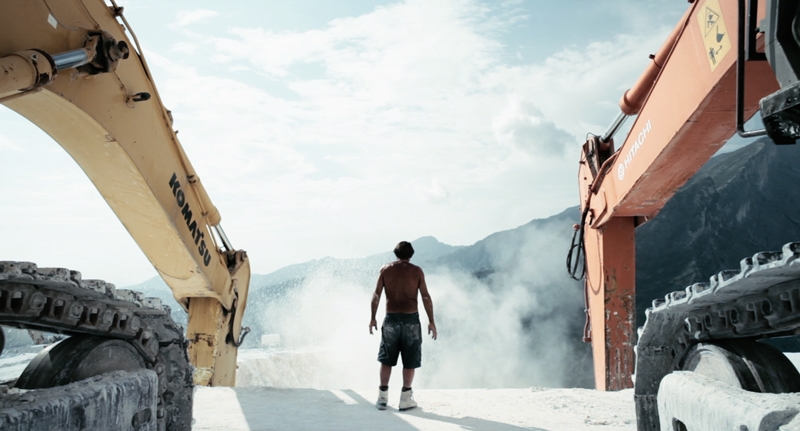Few people outside of film circles in the United States will be familiar with Yuri Ancarani’s work, and one hopes this series of short films, which is being screened continuously at the Hammer Museum, will remedy that fact. Rather than showing Ancarani’s works intermittently as part of a regular schedule and larger lineup, which museum film programmes are wont to do, the Hammer has three of his best works, Il Capo (2010), Piattaforma Luna (2011) and Da Vinci (2012), a trilogy that the artist calls La Malattia del Ferro (The Disease of Iron), on continuous view in a single side-gallery appointed with comfortable beanbag seating that suggests one should get comfortable. And indeed one should.
Ancarani, born in Ravenna and living and working in Milan, has been showing his work in art exhibitions for more than a decade, but since 2009 his films have been making the festival rounds, and awards have been stacking up. Spend just a little time with Il Capo and one understands why.
This film is ‘about’ the operations of a Carrara marble quarry and the grizzly but sad-eyed foreman who directs the excavators that break off enormous, impossibly geometric slabs of the rock. The soundtrack consists only of the hacking roars of the excavators’ engines and the piercing clanks of metal on metal and loud knocks of metal on stone, all punctuated by moments of seeming near silence when the foreman surveys the cuts just made. In one sequence, he stands in front of a wall of marble, which an excavator gradually takes down from behind and below to reveal the mountain quarry’s opposite slope, dusted white with what look like grains of light.
Piattaforma Luna goes from the extreme environment of the quarry to the no less extreme containment of a deep-sea mining operation, where Ancarani’s camera is trained on a group of divers who move around their cramped, pressurised quarters with careful deliberation. The only sound here comes from the constant hum of the rig’s environmental controls and the occasional squawk of the divers’ voices, rendered comically high-pitched from the mix of helium in the air they need to breathe at such depths. Da Vinci opts for even more claustrophobia as it records the actions of a da Vinci Surgical System – a robotic platform that doctors use to keep major surgeries minimally invasive – at work inside a patient’s body.
Ancarani is not afraid of the still camera and the centred shot. This formal language, combined with his favouring of ambient, synched sound and far-from-equilibrium environments, gives the trilogy its signature definition. If Il Capo remains king here, though, it’s only because the beauty and the violence of that film is less contained than in the other two. The vastness of its geological scale, of its brute industry, is more palpable than the fluid dynamics of Piattaforma Luna or the invisible electronics of Da Vinci. Yet, because this is a trilogy, one needs to recognise how the technological refinement of ‘excavation’, for which the films together serve as a kind of allegory, is not really, or not only, progress – these scenes and their actors are all contemporaries – but a kind of repression as well. The deeper we go into the interior of the earth or the body to excise or extract the things we need or want – or, in the case of Da Vinci, the things we don’t want – the less of us we are apt or able to see.
This article was first published in the January & February 2015 issue.
